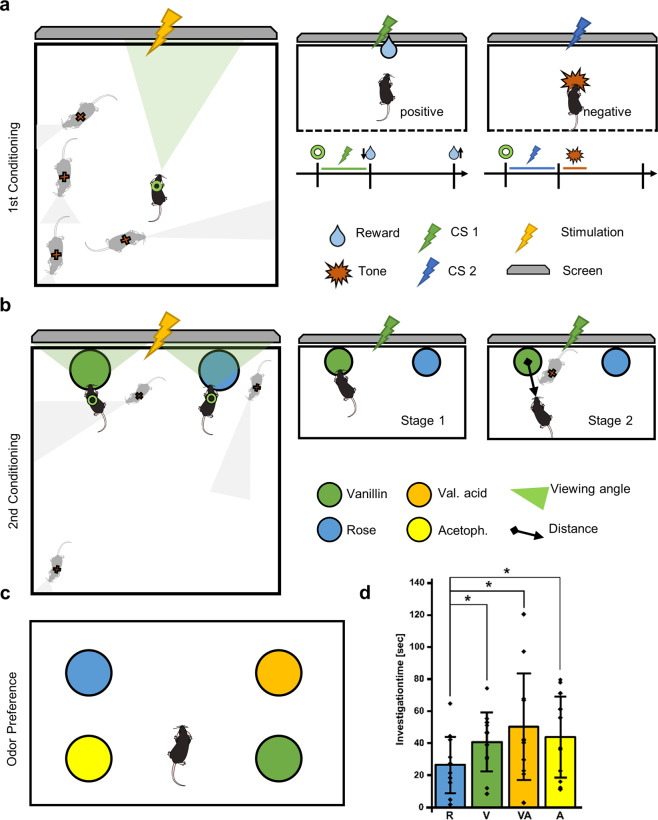Fig. 3. Closed-loop conditioning task.
a Conditioning. When a trial is triggered by the mouse facing the screen (green triangle and ring), the mouse is shown a visual stimulus (yellow lightning bolt). Mice not facing the screen do not receive the stimulus (red x). In the positive trial (green lightning bolt, green line), a reward is delivered (blue drop, arrow down) and withdrawn (blue drop, arrow up) if not collected within a preset time period. In the negative trial (blue lightning bolt, blue line) only a loud tone (red polygon) is delivered. b 2nd Order conditioning. Upon exploration of either odor location (colored black circle) the mouse is shown one of the previously conditioned visual stimuli on the screen (yellow lightning bolt). Conditioning was conducted in two stages. The first stage (Stage 1) consisted of direct contact with the odor location, while the second (Stage 2) was dependent on the proximity of the mouse to one of the locations (black arrow) and the mouse facing towards it. c Odor preference task. The mouse was set in an open field arena with one odor in each of the quarters (colored circles). The total investigation time of each odor source was measured. d Investigation time during odor preference task in odor location: ROIs encircling the odor location. The bar graph shows the STD and individual data points. p < 0.05 (*) one-tailed paired t-test; R/V p = 0.0395, R/VA p = 0.0497, R/A p = 0.0311; n = 11 trials (2 trials per mouse, 1 trial excluded, 6 mice total; see also Supplementary Data 1). Error bars represent standard deviation. V = Vanillin (S+), R = Rose (S−), VA = Valeric acid, A = Acetophenone.

